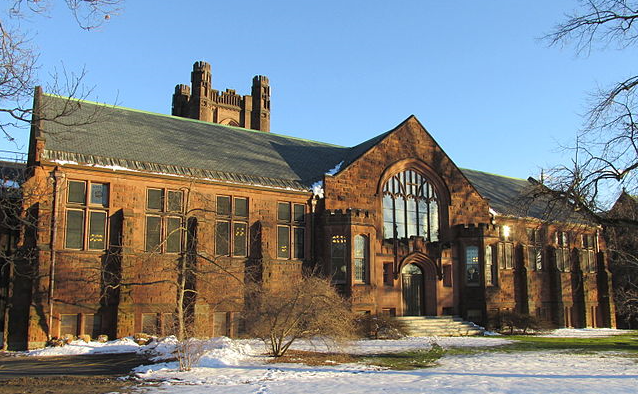I recently reviewed Geordan Hammond and David Ceri Jones’s George Whitefield: Life, Context and Legacy (Oxford, 2016) at the Journal of Religion. This book reflects the latest in scholarly approaches to Whitefield and early evangelicalism, and is definitely not in the hagiographical vein of some treatments of Whitefield. Here’s an excerpt of my review:
“This rich volume is the product of a 2014 conference commemorating the three hundredth anniversary of Anglican evangelist George Whitefield’s birth. It assembles sixteen essays by a distinguished roster of scholars, examining largely understudied aspects of Whitefield’s life and cultural context. The editors contend that until recently, the study of Whitefield has been “one-dimensional” (8), as older biographers focused
almost exclusively, if understandably, on Whitefield’s preaching ministry.
They note that academic works over the past quarter century by Frank Lambert (one of the contributors), Harry Stout, and Jerome Mahaffey had already begun to rectify the deficiencies in the literature on Whitefield. Although the book came out in 2016, the conference took place too early for many of the contributors to interact with my 2014 Yale
University Press biography of Whitefield, or Jessica M. Parr’s Inventing George Whitefield (2015). The editors hope that their volume presents Whitefield in “new and innovative contexts,” and in this it undoubtedly succeeds…
The editors’ introduction reviews much of the major literature on Whitefield, dating to his first biographer, the eighteenth-century Church of Scotland pastor John Gillies. Boyd Stanley Schlenther’s opening chapter on “Whitefield’s Personal Life and Character” strikes a tragic tone, at best, arguing that if only Whitefield had stuck to evangelism, he might have steered clear of the “albatross-like incubus” of the Bethesda
Orphanage in Georgia. That project also steered Whitefield into the greatest moral problem in his career, namely his advocacy for the legalization of slavery in colonial Georgia and his personal ownership of slaves.
One of the most fascinating pieces in the book will also be the most unexpected for many readers: the essay on Whitefield’s voice by Braxton Boren, who holds a New York University PhD in music technology. Although historians and theologians may struggle to understand Boren’s technicalities, he offers an exciting contribution to the history of sound and unprecedented validation of the auditory power of Whitefield’s preaching. Using Benjamin Franklin’s assessment of Whitefield’s vocal range in Philadelphia as a baseline, Boren concludes that under optimal circumstances Whitefield’s voice could have at least faintly reached the edges of a crowd of up to 60,000 people. If true, then Whitefield “might well have been one of the loudest people that ever lived.” [see also my TGC interview with Boren here]
Another imaginative chapter comes from Stephen Berry, who notes that while Whitefield spent more than two years of his life traversing the Atlantic, scholars have done little to understand what the ocean, and ocean-going ministry, meant to the revivalist….
For readers interested in the broader history of evangelicalism in this period, perhaps the most rewarding chapter comes from the eminent historian Mark Noll, who analyzes “Whitefield, Hymnody, and Evangelical Spirituality.” The basis of this chapter is Whitefield’s hymnal A Collection of Hymns for Social Worship (1753), which came out in dozens of editions and was used widely among evangelicals across the British Empire
and in the independent United States. Noll emphasizes that evangelicalism has always been “a singing expression of Christianity” more than a preaching kind of faith (though Whitefield might have quibbled with Noll on this point). Thus, examining Whitefield’s choices of hymns is a uniquely illuminating exercise.
The hymn writers in Whitefield’s book came from a wide range of mostly Protestant perspectives, led by the great lyricists Isaac Watts and Charles Wesley. Noll finds that while the writers came from varied backgrounds, in Whitefield’s volume their songs tended to fit within variations on the same great themes: Christ’s atoning death for sinners and the saints’ thankfulness for divine forgiveness. The “hymn book’s centre of gravity” is what Noll calls the “affectional atonement.” Joy over Christ’s sacrificial death drowned out other seemingly significant theological issues and practices, such as the Lord’s Supper and baptism.
Although the book closes with chapters by Isabel Rivers and Andrew Atherstone on Whitefield’s later reception and commemoration, there is not a hint of the hagiography that characterized some earlier devotional approaches to Whitefield. (Schlenther says these earlier approaches used “whitewash” as their primary color for Whitefield.) Instead, the authors offer a bounty of new analyses, often based on underused or
previously unknown primary sources, putting Whitefield more fully into his eighteenth-century British context.
The editors tell us that they are also preparing a “complete and critical edition of Whitefield’s extensive transatlantic correspondence.” This is badly needed, since the most complete edition of Whitefield’s works was prepared, edited, and redacted by the Rev. John Gillies shortly after Whitefield’s death in 1770. Between the cumulative weight of the new writing about Whitefield, and the forthcoming edition of his papers, we can hope that the next generation will see a reinvigorated era of scholarship on this titan of Anglo-American religion.”
Read the whole review here [subscription].
Before you complain about the price of the book, read this.

















